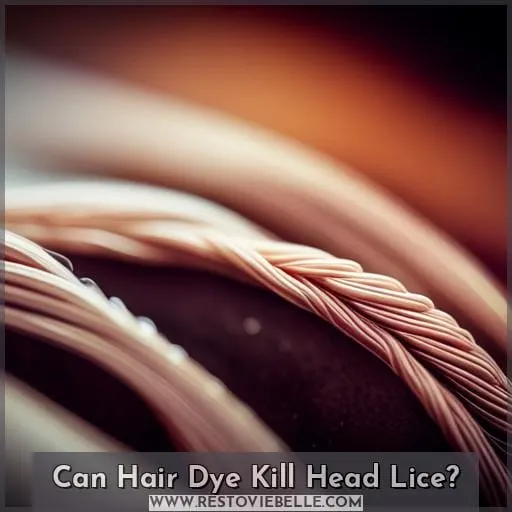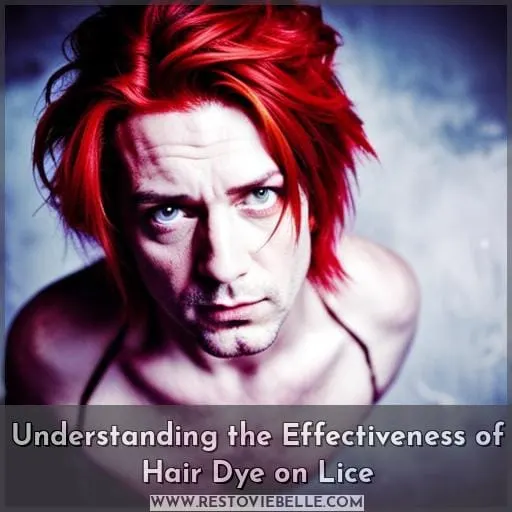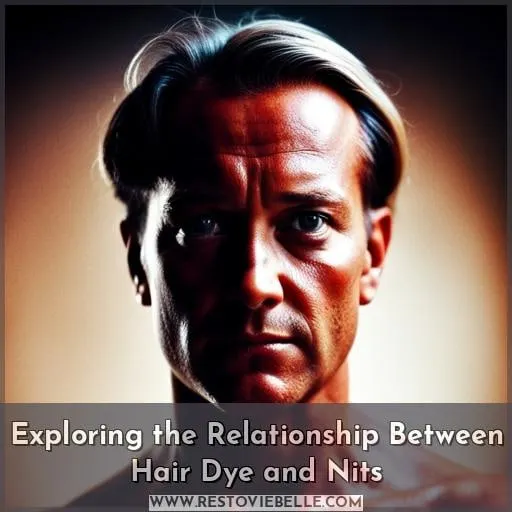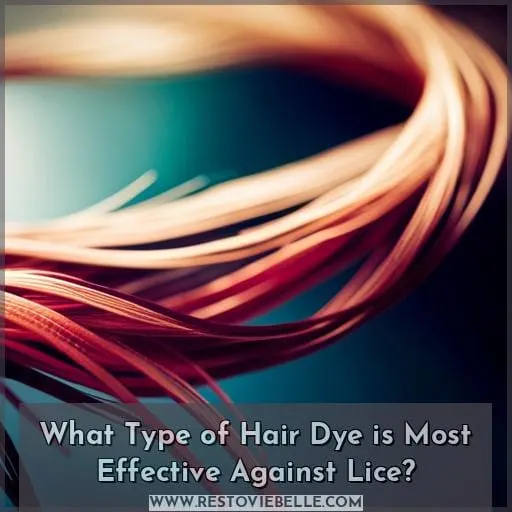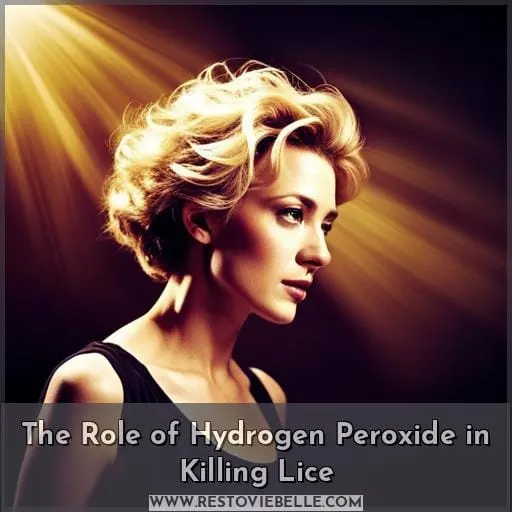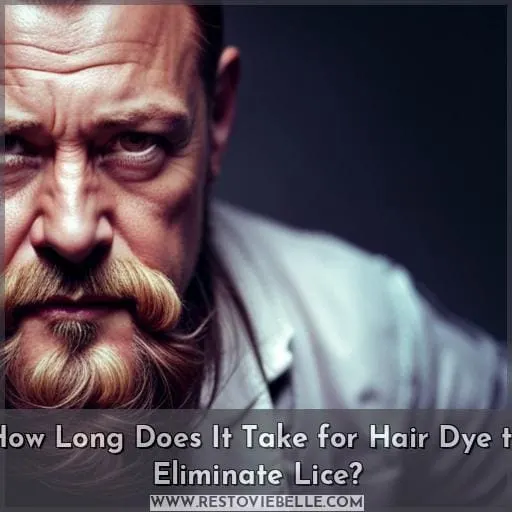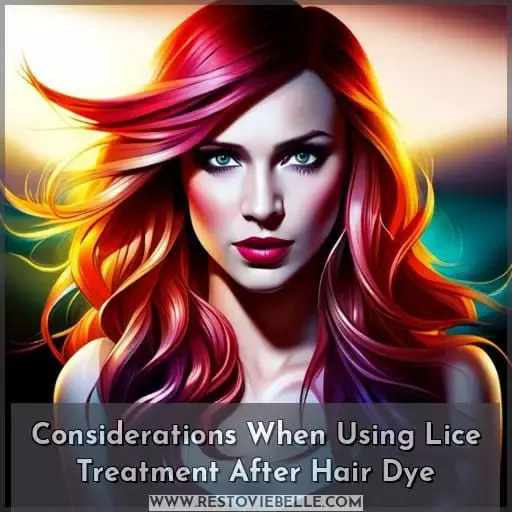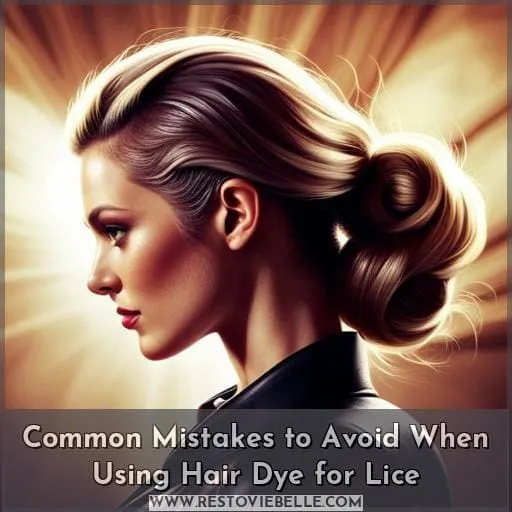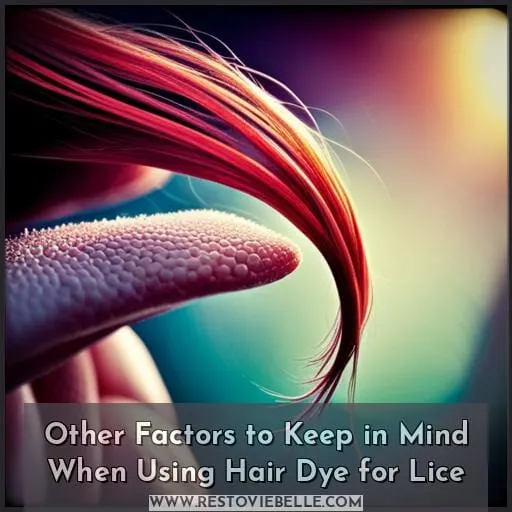This site is supported by our readers. We may earn a commission, at no cost to you, if you purchase through links.
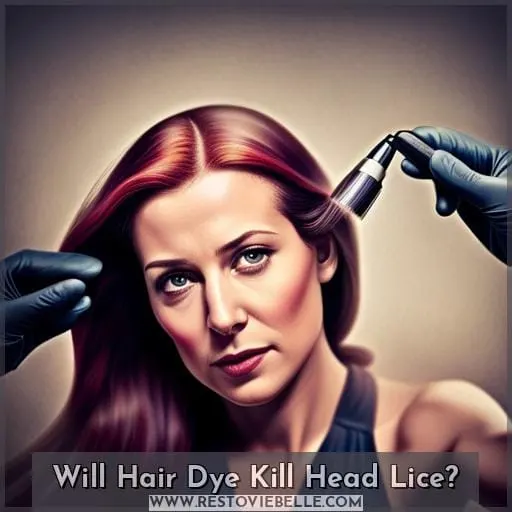 It’s an infestation of epic proportions! Head lice are the tiny parasites that can make life miserable for anyone with hair. Children attending preschool and elementary school, as well as their caretakers and those in their household, have the highest risk of infestation.
It’s an infestation of epic proportions! Head lice are the tiny parasites that can make life miserable for anyone with hair. Children attending preschool and elementary school, as well as their caretakers and those in their household, have the highest risk of infestation.
Ranging from brown to translucent white in color, these wingless insects feed on human blood while living up to 30 days on a scalp – laying three to five eggs daily.
So will hair dye kill head lice? Let’s take a closer look at this potential treatment option before exploring alternative solutions available when dealing with pesky nits!
Table Of Contents
- Key Takeaways
- Can Hair Dye Kill Head Lice?
- Understanding the Effectiveness of Hair Dye on Lice
- Exploring the Relationship Between Hair Dye and Nits
- What Type of Hair Dye is Most Effective Against Lice?
- The Role of Hydrogen Peroxide in Killing Lice
- How Long Does It Take for Hair Dye to Eliminate Lice?
- Considerations When Using Lice Treatment After Hair Dye
- Common Mistakes to Avoid When Using Hair Dye for Lice
- Other Factors to Keep in Mind When Using Hair Dye for Lice
- Conclusion
Key Takeaways
- Hair dye is considered a potential treatment for head lice, but there are no scientific studies to prove its effectiveness.
- Improper use of hair dye can lead to adverse reactions and is not recommended for children due to safety concerns.
- Alternative treatments such as insecticide-based, silicone-based, and plant-based options are available.
- Manual removal of lice eggs (nits) is crucial for complete eradication, and combining treatments may increase efficacy and prevent resistance.
Can Hair Dye Kill Head Lice?
If you’ve been searching for an effective lice solution, you may have considered using hair dye. However, it’s important to weigh the risks and alternatives before making a decision.
Hair dye comes in various forms, including direct, semi-permanent, temporary, or permanent colors. It contains chemicals that could potentially kill head lice. However, there are no scientific studies proving its effectiveness against lice, so the claim remains anecdotal.
It’s crucial to note that using hair dye improperly can lead to adverse reactions. These reactions may include scalp swelling, redness, burning, itching, vomiting, breathing issues, chemical burns, or even vision loss.
Due to these potential harms, hair dyes are not recommended for children, as they can be harmful if swallowed or get into the eyes.
Fortunately, there are alternative lice treatments available. These include insecticide-based, silicone-based, and plant-based treatments. These treatments can be combined with physical removal of nits from the hair using combs.
Companies like LiceFreee have been offering reliable non-toxic options since 1991.
Despite the availability of these alternatives, an estimated 6-12 million lice infestations occur among 3-11 year olds in the US each year.
Understanding the Effectiveness of Hair Dye on Lice
When considering treatment for head lice, it is important to be aware of the potential risks and alternatives associated with using hair dye. Permanent hair dye may contain chemicals that can be harmful if ingested or come into contact with eyes, making them an unreliable choice for treating head lice in children.
Additionally, there are other safe and effective options available, such as non-toxic anti-lice products, that should always be taken into consideration before opting to use hair dye on your child’s head lice infestation.
Precautions and Risks of Using Hair Dye for Lice Treatment
Using hair dye for lice treatment may seem like an easy solution, but there are important precautions and risks to consider.
- Safety Precautions: Hair dye can be harmful if swallowed or gets in the eyes, so it is not recommended for children due to the potential harm.
- Allergic Reactions: Possible side effects include scalp swelling, redness, burning, itching, and hair damage, which can lead to serious reactions such as vomiting and chemical burns.
- Eye Irritation & Chemical Risks: Hair dyes contain chemicals that may cause eye irritation or other health hazards.
- Child Safety: Children should avoid using any type of hair dye as a form of treatment because they have a higher risk of experiencing adverse reactions from the chemicals used in them. Be sure to explore safe and effective alternatives before resorting to using any type of hazardous products on your child’s head.
Alternatives to Hair Dye for Head Lice Treatment
Looking for an alternative to hair dye for lice treatment? Consider non-toxic solutions like LiceFreee, which has been providing effective and reliable products since 1991.
An estimated 6–12 million cases of head lice occur among 3–11 year olds in the US each year, so it’s important to find a safe yet effective solution.
Natural remedies such as essential oils can be useful but are not scientifically proven to work against all types of lice infestations. Chemical treatments are available over-the-counter with varying levels of effectiveness; pediatric considerations should be taken into account when selecting one such product.
Prevention tips include avoiding sharing combs or hats and frequent washing of bedding and clothing items that come in contact with the scalp area regularly.
Non-toxic solutions like LiceFreee help provide an easy way out without having to resort to chemical treatments or potentially harmful hair dyes while still getting rid of stubborn head lice fast!
Exploring the Relationship Between Hair Dye and Nits
It’s important to consider the relationship between ammonia-based hair dyes and nits when battling a lice infestation. Permanent dye with ammonia may kill adult head lice, but it won’t penetrate or remove nits.
Hair bleach is another option that contains chemicals like ammonium persulfate, which could be helpful in killing off the pests. However, combining this with other removal techniques such as vinegar is best practice for optimal results.
Although not scientifically proven to work against head lice, using hair dye overall isn’t completely safe either, as it can cause scalp swelling and irritation if used incorrectly. It has also been known to damage the hair, with more serious effects including chemical burns and vomiting being reported on rare occasions.
Ultimately, while there are some potential benefits of using permanent dyes in treating head lice problems, safer non-toxic alternatives do exist that offer reliable anti-lice solutions without putting your health at risk.
What Type of Hair Dye is Most Effective Against Lice?
Considering the effectiveness of various types of hair dye against lice, it’s important to find one that works best for you. Permanent ammonia-based hair dyes can potentially kill adult lice but not their eggs (nits).
Bleach with chemicals like ammonium persulfate may also help, while a combination of dyeing and vinegar or other removal techniques is advisable.
Non-chemical alternatives such as LiceFreee are safe options available since 1991. Before using any type of hair dye on your head, be aware that there are risks associated with its use and side effects can range from scalp irritation to chemical burns or loss of vision if swallowed or if it gets into the eyes.
It’s therefore recommended not to attempt this treatment alone on kids due to the potential harm involved.
Consider safe and effective alternatives before resorting to chemical treatments to ensure safety at all times when dealing with head lice infestations!
The Role of Hydrogen Peroxide in Killing Lice
You may have heard of using hydrogen peroxide to get rid of pesky lice infestations. Hydrogen peroxide is a chemical compound made up of two oxygen atoms and two hydrogen atoms, connected together by covalent bonds.
The effectiveness in killing lice depends on the concentration used. Higher concentrations can cause damage to hair follicles and scalp skin, so caution should be taken when employing this method.
It has been suggested that combining treatment with other methods could help increase efficacy while preventing further resistance from developing. This is important because head lice populations have developed resistance towards certain treatments, including those containing permethrin or pyrethrins.
Using high-concentration solutions like hydrogen peroxide can have potential hazards, such as skin irritation or lightening/damaging hair color if not properly diluted before use.
Individuals should always consider safe yet effective options before resorting to harsher measures like bleaching their hair or applying strong chemicals onto their scalps.
How Long Does It Take for Hair Dye to Eliminate Lice?
To manage those pesky little critters, consider turning to a hair-care solution that can take care of the problem in no time.
The length of time depends on several factors such as the type and strength of hair dye used, the rate at which it penetrates the scalp layers, the survival rate of lice exposed to dyed strands, or nits resistance.
Generally speaking, permanent dyes are more likely than semi-permanent alternatives like lightening kits and temporary tints when trying to kill head lice. However, even these stronger options may not completely eradicate all parasites due to their ability to adapt quickly over generations, becoming increasingly resistant against treatments including chemical-based ones like permethrin lotions or other insecticides found in shampoos.
When seeking out a safe way to deal with head lice without resorting to harsh chemicals, many people turn towards natural solutions such as home remedies involving vinegar rinses before shampooing off with regular water, followed by thorough combing using high-quality fine-tooth nit combs until all signs have been removed from hair shafts.
It is also important to pay close attention around the ears and neckline areas where eggs tend to hide best.
Allowing enough drying time between washings is a key part of the successful elimination process, taking anywhere from 18 hours up to multiple days depending on the severity of the infestation situation itself.
Forgo any form of additional styling products after treatment has started and wait a few weeks before returning to normal routine washing, blow-drying, coloring, etc. Remain vigilant to make sure stubborn specimens don’t return and recheck frequently during this period to ensure lasting results and peace of mind.
Future prevention methods can also help prevent another outbreak from happening soon down the road.
Overall, whether looking for some extra assurance, protection, or safety, it is always beneficial to check labels and consult a doctor beforehand for careful application of non-toxic and trustworthy brands available on the market today.
Considerations When Using Lice Treatment After Hair Dye
Are you considering using hair dye to get rid of lice? While there is some anecdotal evidence that it can be effective, the safety and efficacy are still unclear. Hair dyes contain chemicals that may cause serious side effects if not used properly; therefore, it’s important to weigh all potential risks before taking any action.
Efficacy of hair dye
Though the scientific evidence is still inconclusive, anecdotal reports suggest that using hair dye may help in dealing with lice infestations. However, there are risks and safety considerations to keep in mind when trying this method.
Lice have been found to be resistant to some chemical components of hair dye or bleach. Hair dyes can also cause irritation and burning on sensitive skin if used incorrectly. Therefore, it’s important to use a professional lice treatment service for removal as well as frequent combing after treating with any product, including hair dye products, for complete eradication of the problem.
Natural alternatives, such as non-toxic treatments from companies like LiceFreee, offer safe solutions without harsh chemicals or potential side effects. These alternatives should always be considered before resorting to potentially harmful methods, such as dying one’s own head at home.
Safety concerns and risks
Be aware that using hair dye to treat head lice can be dangerous and may cause serious reactions, such as burning, itching, breathing issues, and even vision loss. Safety concerns should always be taken into account when considering hair dye as a lice treatment.
Precautions must be taken to avoid contact with the eyes or ingestion of the chemicals to prevent any adverse effects. It is important to note that the effectiveness of hair dye as a lice treatment is largely anecdotal.
However, there are alternatives available, such as LiceFreee, for those seeking safe and effective solutions against infestation. These alternatives do not involve harsh chemical treatments like hair dyes or bleaches, which can pose a risk to your health if not handled properly.
Alternatives to consider
It’s important to consider safe and effective alternatives before resorting to hair dye for lice treatment. Natural remedies, such as vinegar, essential oils like tea tree oil, mayonnaise, or coconut oil, are some of the most common homeopathic solutions.
Chemical options, like over-the-counter treatments containing insecticides, can also work well if used properly. For pediatric concerns specifically, it’s best to consult a doctor for advice on preventive measures that will not be harmful while treating lice infestations in children with non-toxic products.
Hair dye should only be considered after all other safer alternatives have been explored due to its potential risks and side effects when using it as a form of head lice treatment.
Common Mistakes to Avoid When Using Hair Dye for Lice
Before attempting to use hair dye as a lice treatment, make sure to avoid some common mistakes.
Improper application of the dyeing process can lead to ineffective results and increased resistance from lice. If using ammonia-based dyes, it’s important not to overuse or leave them on for too long.
Never combine treatments such as vinegar with any form of hair dye. They may react dangerously together.
It’s also important to manually remove nits and dead lice before applying products. This ensures that no remaining eggs are left behind, which could result in reinfestation later on.
When choosing your product, always opt for natural alternatives like those offered by LiceFreee.
Be mindful when selecting safe and effective methods against head lice. If done properly, you’ll have nothing more than happy heads all around!
Other Factors to Keep in Mind When Using Hair Dye for Lice
If you are considering using hair dye as a lice treatment, there are several important factors to consider. Hair dye may not be effective against head lice and can even be potentially dangerous if used incorrectly.
It is important to research safe alternatives before resorting to hair dye for treating an infestation of lice.
Potential effectiveness of dye
Though dye may seem like an easy solution, it’s important to understand its potential effectiveness against lice. Permanent hair dye with ammonia is alkaline and can potentially kill lice but won’t penetrate or remove nits.
Hair bleach also contains chemicals that could help fight off the invaders. However, both still haven’t been proven effective in killing them scientifically.
Using a combination of these products along with other removal techniques might be more successful than relying on them alone. Plus, they come with safety risks and side effects such as itching scalp, burning sensation, vomiting, etc.
So, using natural alternatives should always be considered first before resorting to this method of treatment for head lice infestations.
Risks and side effects
Given the potential harm, you should be aware of the risks and side effects when considering using hair dye for lice treatment; it may not be worth it in exchange for temporary relief. Safety concerns include accidental ingestion or contact with eyes that can cause severe reactions such as vomiting, breathing issues, chemical burns, and even vision loss.
Allergic reactions are also a risk. Scalp irritation may occur from both permanent dyes containing ammonia and bleach-based products like ammonium persulfate. Long-term effects could involve damage to your hair if used too often or incorrectly.
Eye hazards pose an even greater threat due to direct contact between chemicals and sensitive areas on your face.
Consider safer alternatives
You could consider safer alternatives to using hair dye when treating head lice. Natural remedies like apple cider vinegar and deep conditioning treatments, as well as pediatric-specific products, are available on the market.
Hair bleach may be effective against adult lice but cannot penetrate or remove nits (lice eggs). A reliable product worth considering is LiceFreee’s line of safe anti-louse products that have been around since 1991.
Taking safety precautions such as wearing gloves and avoiding contact with eyes during treatment are also important to reduce chemical risks associated with hair dyes/bleaches for both adults and children alike.
Conclusion
In light of all the evidence, it’s clear that using hair dye to kill head lice is an unreliable and potentially dangerous solution. While the ammonia in hair dye may kill lice, it doesn’t guarantee complete removal of nits.
There are safer and more effective options available for treating head lice, such as non-toxic products from LiceFreee or other over-the-counter treatments. With the right precautions and treatments, you can get rid of head lice without putting yourself at risk.

